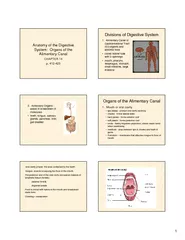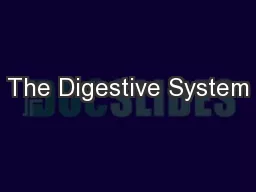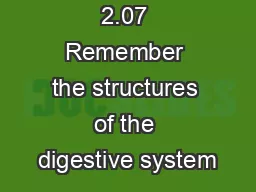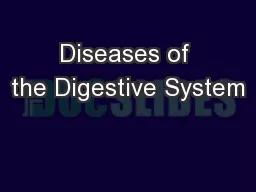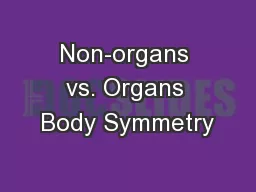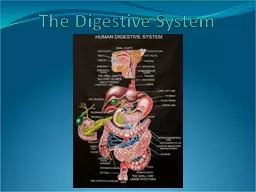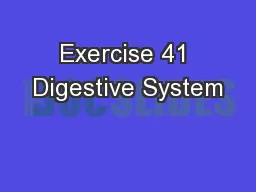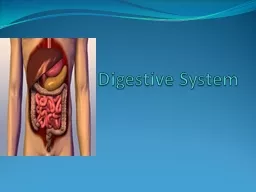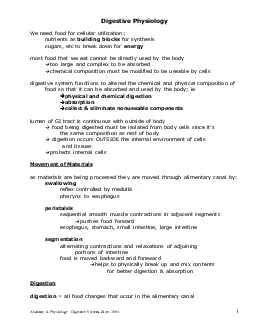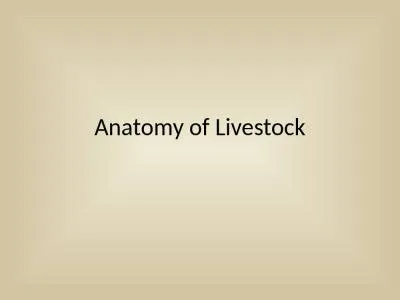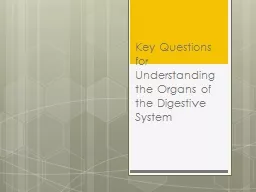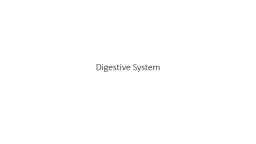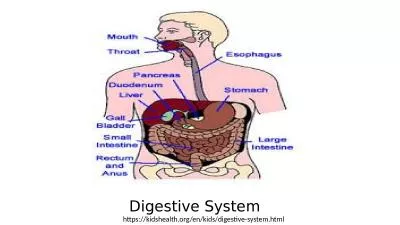PDF-Anatomy of the Digestive System Organs of the Alimenta
Author : trish-goza | Published Date : 2015-04-25
412423 Divisions of Digestive System 1 Alimentary Canal or Gastrointestinal Tract GIdigests and absorbs food coiled hollow tube with 2 openings mouth pharynx esophagus
Presentation Embed Code
Download Presentation
Download Presentation The PPT/PDF document "Anatomy of the Digestive System Organs o..." is the property of its rightful owner. Permission is granted to download and print the materials on this website for personal, non-commercial use only, and to display it on your personal computer provided you do not modify the materials and that you retain all copyright notices contained in the materials. By downloading content from our website, you accept the terms of this agreement.
Anatomy of the Digestive System Organs of the Alimenta: Transcript
Download Rules Of Document
"Anatomy of the Digestive System Organs of the Alimenta"The content belongs to its owner. You may download and print it for personal use, without modification, and keep all copyright notices. By downloading, you agree to these terms.
Related Documents

